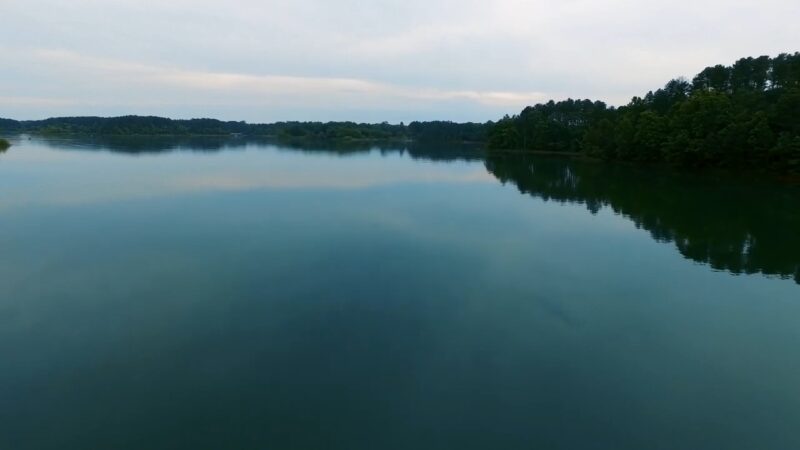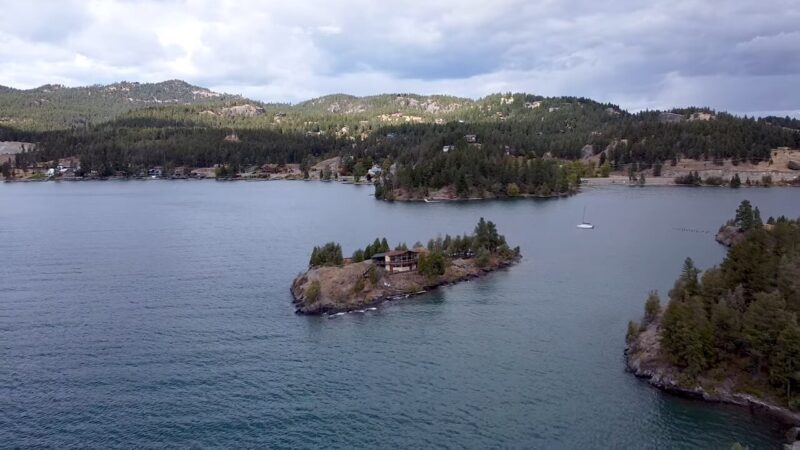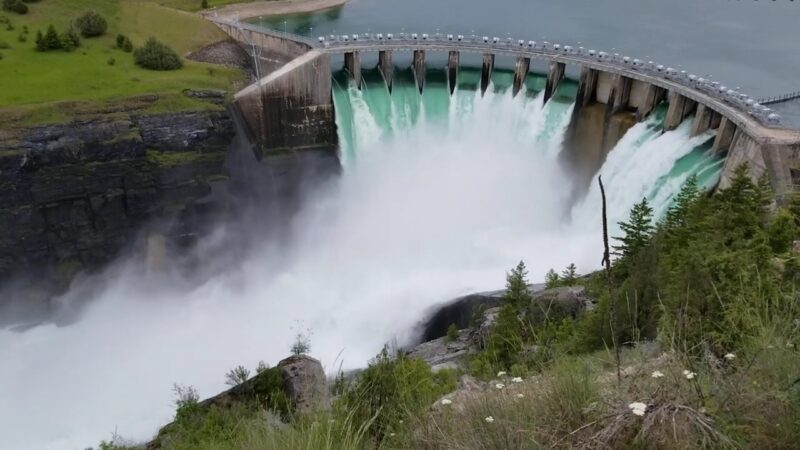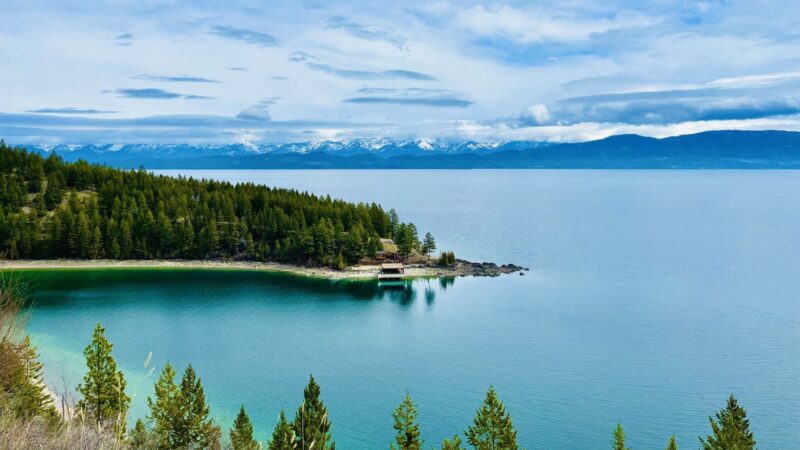Flathead Lake, located in northwestern Montana, is a significant natural resource renowned for its size, beauty, and ecological importance.
In 2023, we witnessed record-low water levels.
But did that happen in the past as well?
Let us see.
Historical Context of Flathead Lake Water Levels

Flathead Lake’s water levels have been recorded since the early 20th century, offering a rich historical context for analysis.
Initial observations indicated a relatively stable water level, primarily influenced by natural seasonal variations.
However, significant changes began with the construction of Kerr Dam in 1938.
This structure allowed for better control of water levels but also introduced new variables, such as human management and regulation.
Key historical events have impacted water levels, including the expansion of irrigation projects and the increasing demand for water from agricultural and urban areas.
Over the decades, these factors, combined with natural variations, have led to noticeable changes in the lake’s water levels.
Historical data reveal periods of both unusually high and low water levels, each corresponding to various environmental and human-induced events.
Recent Changes in Water Levels
In recent years, Flathead Lake has experienced a declining trend in water levels, a cause for concern among scientists and local stakeholders.
Data from the past few decades show a clear downward trajectory, particularly pronounced in the last ten years.
Several factors contribute to this decline, including:
- Prolonged droughts
- Higher evaporation rates
- Reduced snowpack
Comparative analysis of water levels over recent decades highlights significant deviations from historical averages.
For instance, the 2023 water levels were among the lowest ever recorded, marking a stark contrast to the highs of previous decades.
This trend is consistent with broader regional patterns observed in other freshwater bodies, suggesting that systemic changes, such as climate change, are at play.
Monitoring these recent trends is vital for developing effective management strategies to mitigate adverse effects on the ecosystem and local economy.
Climate Change and Weather Patterns
Climate change has emerged as a primary driver of altered water levels in Flathead Lake.
Warmer temperatures increase evaporation rates and alter precipitation patterns, leading to reduced water input.
Specific climatic events, like El Niño, exacerbate these effects by causing extreme weather variations that disrupt the lake’s natural balance.
The frequency and intensity of such events have been rising, contributing to the observed trends.
Snowpack and Runoff
The relationship between winter snowpack and summer water levels is critical for Flathead Lake.
Historically, a substantial snowpack ensured a steady flow of meltwater into the lake during warmer months.
Changes in snowmelt timing and runoff patterns, driven by rising temperatures, have disrupted this cycle.
Earlier snowmelt and reduced snowfall directly affect the lake’s replenishment, leading to lower water levels during the crucial summer season.
Human Activities
Human activities significantly impact water levels through dam operations, agricultural practices, and recreational water usage.
The management decisions at Kerr Dam, for instance, influence water release schedules, directly affecting lake levels.
Increased agricultural irrigation demands and growing recreational use put further strain on water resources.
Case Studies and Data Analysis
Now let us take a look at some concrete facts about several major factors that contributed to the water levels in the past.
Case Study 1: 2023 Historic Lows

In 2023, Flathead Lake experienced historically low water levels, as reported by KPAX News.
This record low was attributed to a combination of factors, including an exceptionally dry winter, early snowmelt, and increased water usage.
The data showed a significant deviation from average levels, highlighting the urgent need for adaptive management strategies.
These events underscore the vulnerability of the lake to both natural and anthropogenic influences.
Case Study 2: The Role of Dam Operations

Insights from Montana Public Radio reveal the significant role of dam operations in managing Flathead Lake’s water levels.
Regulatory decisions, such as adjusting water release schedules, can either mitigate or exacerbate fluctuations.
The balance between generating hydroelectric power and maintaining ecological stability is delicate, often requiring nuanced decision-making to address competing interests.
Case Study 3: Long-Term Trends and Projections

Long-term data visualization illustrates persistent trends in declining water levels at Flathead Lake.
Analyzing these trends provides valuable insights into potential future scenarios.
Projections indicate that without significant intervention, the lake could face even lower water levels, affecting both the ecosystem and the local economy.
Summary
Flathead Lake’s water levels have experienced significant changes over time, influenced by various factors.
Continued research and proactive measures are essential to mitigate adverse effects and preserve the lake for future generations.







